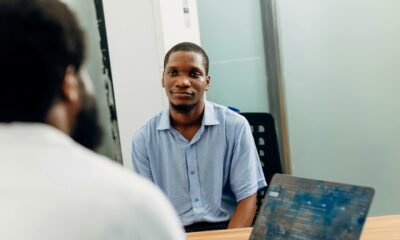Features
Chisom Olamigoke: Don’t Fall into This Trap Called ‘Multitasking’

Most of us grew up learning that multitasking was a super skill we should develop. We bought so much into the concept that we gave ourselves to learning how to multitask better, and some got so good at it that they put it on their CVs and resumés: “I am a multitasker.”
The truth is that if you are multitasking, you’re probably just splitting attention between different tasks, which shouldn’t be because, in most cases, a task gets denied its deserved attention.
Multitasking is neither time-saving nor effective but this is something we would continue to grapple with because people place value on multitasking and multitaskers. Yes, you can listen to a podcast while cooking, and you can be on a call while prepping yourself for the office, but when we talk about official or work-related tasks, it can become almost impossible to juggle them at the same time. Besides, listening to a podcast while cooking can also render one task deficient, as you most likely cannot get the best of both activities. One activity will suffer and in this instance, it’d most likely be the podcast. Well, that’s if the case isn’t reversed and you get so engaged in the podcast that you mistakenly add more salt. Haha.
Research has shown us that actively working on two or more projects at a time leads to longer project duration and lesser value of work output. What happens whenever we try to swing between tasks is that we spread our time, focus, attention and skill over many projects and before we know it, we’re stretched thin. You reach a supposed good stage in one task and then switch over to the other task in a bid to bring it up to speed. And so the cycle continues across many tasks you have on hand. You’d think you’re making progress because there is a lot of activity going on but in reality, you’re not working optimally.
Experiment with this: Say you have three tasks that you work on daily. For three days, start the tasks at the same time and actively multitask. When you finally get to the finish line, note how long it took for each task to be completed. Do this for three days so you can get the average completion time. This is the first experiment.
Then for another three days, start and finish a task before moving on to the next. As you complete each task, note how long it takes. Find the average completion time for the three days and compare your results with the first experiment. You’ll discover whether multitasking is time-saving or not.
What is rather advised is that complex tasks are broken into smaller executable bits. For instance, an article that could not be completed in one sittin can be divided into sub-tasks by writing the first draft, editing, reviewing and then reading again. You don’t switch between writing the first draft and editing it at the same; that is not efficient. Don’t try to get the perfect first draft. Instead, focus and complete the task of writing the first draft. Then you can go do other things and then come back to edit that draft with a fresh perspective. This approach is not only more effective, but it also saves you time.
The thing is, multitasking is a fun thing to attempt; you enjoy it because of the adrenaline rush it gives but being good at it doesn’t guarantee overall project success. You are only excited to have a lot of things in motion but you are not producing your best work when you multitask. It is better to commit to giving each task complete focus before moving on to the next. You will be amazed at the level of output you create.
***























